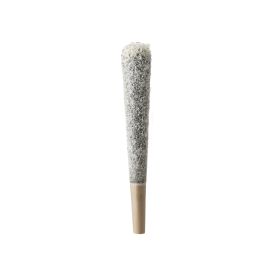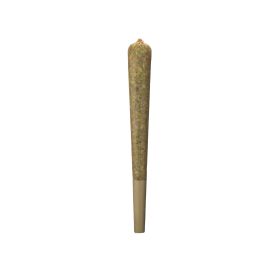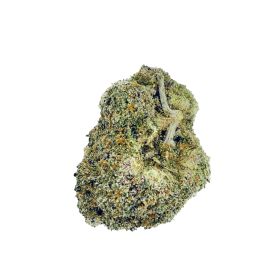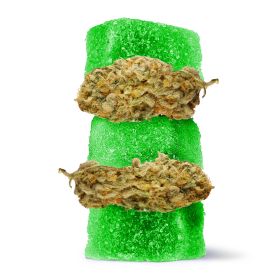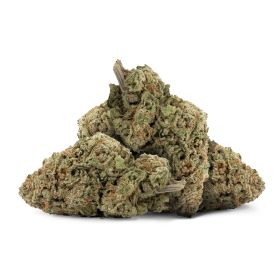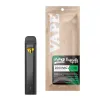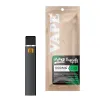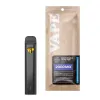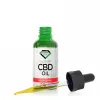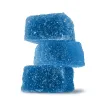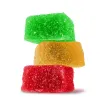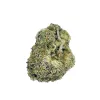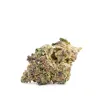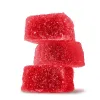Cannabis tea isn’t just an aromatic and delicious beverage; it’s also the most soothing and refreshing way to enjoy all the benefits of cannabis! With a rich and diverse history, an interesting chemical background, and hundreds of ways to personalize its taste and potency, weed tea will soon rise over other beverages and become your favorite.
We all love delta 8 drinks. We love CBD coffee. But there’s a lot to love about cannabis tea, but where did it come from? How is it made? Can its potency be customized? The answers to these questions are as amusing as they are practical, and they can all be found below!
What Is Cannabis Tea?
Cannabis tea is an ancient (and highly effective) traditional medicine for many cultures around the world. Just like edibles, weed tea offers users a way of ingesting cannabis—and reaping all its benefits—without the harshness of smoking or vaping.
So, what is it?
Weed tea, also known as pot tea, cannabis tea, or ganja tea, is a cannabis-infused drink prepared by steeping parts of the cannabis plants in water. Its history spans millennia, and it has traveled all around the globe as a popular herbal medicine and a recreational psychoactive.
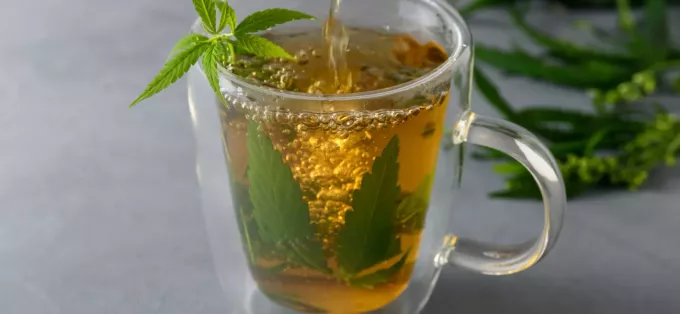
A Global History of Weed Tea
Weed tea is considered one of the world’s oldest medicines. As a matter of fact, some of the world’s oldest civilizations have been proven to have used cannabis to treat illnesses and diseases. From China and India to Egypt and the Caribbean, these ancient cultures recognized the healing properties of marijuana centuries before our modern science did!
Emperor Shennong & Chinese Cannabis
Cannabis itself is found in Chinese archeological sites dating back to around 10,000 to 20,000 B.C.! Rumor has it that Emperor Shennong, who taught agriculture and medicine, first discovered the psychoactive properties, health benefits, and textile potential of hemp around 5,000 years ago. Unfortunately, records from this time period are scarce and unreliable, so the true story of the origins of cannabis is forever lost to time. The concept of “cha,” or tea, however, is a lot more well-known.
As it turns out, tea itself was the result of a happy little accident. Emperor Shennong routinely had his servants boil his drinking water to make it safe to consume. On one occasion, a servant didn’t notice a leaf fall into the boiling water, and allegedly neither did Shennong until he discovered how refreshing this new drink was.
Shortly after, Shennong became obsessed with tea and began studying the properties of different plants, boiling them into teas, and trying them himself. In case you’re not sure where this story is headed, one of the plants the emperor studied was cannabis and thus was born the famous cannabis tea.
Medicinal Cannabis in Egypt
Several Egyptian documents prove that cannabis was used as a medical treatment for various ailments. Although it was first used as a suppository to treat hemorrhoids, which isn’t our favorite way to ingest cannabis today, it was then incorporated into teas and mixtures used to treat inflammation, glaucoma, and even the swelling of inflamed uteri. As a matter of fact, even the mummy of Ramesses II was found covered in cannabis pollen, leading scientists to believe he was buried with the plant.
Although cannabis and its derivates are illegal in Egypt today, their ancestors discovered and took advantage of the medicinal and recreational values of marijuana and hemp centuries ago.
India’s Big Bhang
India’s cannabis story begins with a BHANG! As a sacred plant for Hindus, cannabis products are held in high regard; bhang, or weed tea, is no exception. This Indian homebrew is a strong psychoactive usually made from crushed cannabis buds, leaves, milk, ghee (butter), and spices for taste.
Bhang was first used in India around 1000 B.C. and is described as anxiety-relieving in the Atharvaveda, a knowledge scripture in Hinduism. Even today, it is widely used in North India to treat infirmities:
-
Fever
-
Dysentery
-
Sunstroke
-
Phlegm
-
Digestion issues
-
Low appetite
-
Some speaking imperfections
Bhang also remains a staple of several rituals and festivals, including the Holi Festival of Colors and rituals in adoration of the god Shiva, the “Lord of Bhang.” The tea is incorporated into meditation and yoga and is said to help drinkers achieve transcendental states.
Caribbean Ganja
You may know that Caribbeans are often regarded as extremely involved with cannabis, especially in Jamaica. Rastafarians commonly use marijuana in smoke circles while discussing moral quandaries, but ganja tea isn’t far behind in popularity.
Ganja tea originates from the Jamaican tradition of mothers giving the beverage to their children for strength and focus. Don’t freak out, though. This doesn’t mean that a bunch of kids were running around the island zooted out of their minds. Although mildly psychoactive, ganja tea is made from young plants that aren’t fully ripened, so the tea is less potent than regular cannabis tea.
What About The Others?
While these civilizations are most notable for their advancements in cannabis, the plant pops up in history all around the world, all throughout time. Ancient Greeks used cannabis tea to dress and soak wounds on their horses. Cannabis seeds were ingested to expel tapeworms. They steeped cannabis seeds in water and wine and used the warm extract to treat inflammation and pain.
Sativa was used broadly as medication between the 8th and 18th centuries in the medieval Islamic world. Arabic physicians used it as an antiepileptic, an anti-inflammatory, an analgesic, and more!
So, What Happened?
If humans were using cannabis as medicine centuries ago, you might be wondering, why am I taking ibuprofen for headaches and antacid tablets for heartburn? Why is cannabis vilified as a dangerous drug and ignored for its extensive medical benefits?
Well, the western world took an interest in the possible medical benefits of marijuana, and by 1937 we already had 2000 marijuana-derived medicines. Unfortunately, with the rise of syringes and injectable instant pain relievers, marijuana lost its popularity.
At the beginning of the 20th century, as the Mexican Revolution roared in all its might, thousands of Mexican immigrants sought to come to the United States and settle here for a better life. Their marijuana practices quickly seeped into American culture, and due to xenophobia, sociopolitical turmoil, and the vilification of Mexican Americans, marijuana was falsely rebranded as a dangerous “gateway” drug.
In the 70s, however, THC once again stole the spotlight and caught the attention of doctors and scientists looking to reap its medical benefits, and now medical marijuana is legal in 37 states! Even then, cannabis remains years away from rebuilding its image as a valuable, healthy medicine.
The Chemistry of Weed Tea
When it comes to making weed tea, understanding fundamental cannabis chemistry is nothing short of essential.
The first thing to understand is that raw cannabis contains THCA and CBDA (tetrahydrocannabinolic acid and cannabidiolic acid). These two acids are the precursors to the popular and beloved cannabinoids, THC and CBD, which are known for their extensive psychoactive and medicinal effects,
On its own, however, THCA is non-psychoactive, which means it cannot get you high. Similarly, CBDA has fewer medicinal benefits than CBD. Ingesting these compounds will not have the same effect as a THC vape or a CBD gummy. So, how does cannabis go from non-psychoactive to the medicinal and psychoactive powerhouse we know and love?
That’s very simple! After it’s harvested, cannabis dries out, turning these compounds into their non-acidic counterparts. This doesn’t mean, however, that you can just steep a nug into a bottle of water and make weed tea.
To maximize the effects, you need to heat things up! High temperatures convert THCA and CBDA into the compounds you want and need, making the mixture more psychoactive.
Does Weed Tea Get You High?
As previously mentioned, THCA must be converted into THC to experience the euphoric and psychotropic effects of cannabis tea. When you smoke a joint, for example, this happens naturally when you burn the plant before ingesting the smoke.
If you want to feel the psychotropic effects of THC, you need to use decarboxylated cannabis to make your tea. Because raw cannabis contains minimal THC, adding it without heating it first will lead to a non-psychoactive tea. That said, you will still be able to reap all the benefits of cannabinoids like THCA and CBDA, so if that’s more your style, we say go for it.
Now, back to decarb-ing. Decarboxylation happens when heat is applied to cannabis flower. So, boiling tea water should be enough to decarb your weed, right? Wrong! Boiling water is actually not hot enough to decarboxylate weed, and cannabinoids are fat soluble, so they won’t blend well with just water. Decarboxylating cannabis is more straightforward than the complicated name makes it sound, and we’ll go over it in a little more depth later.
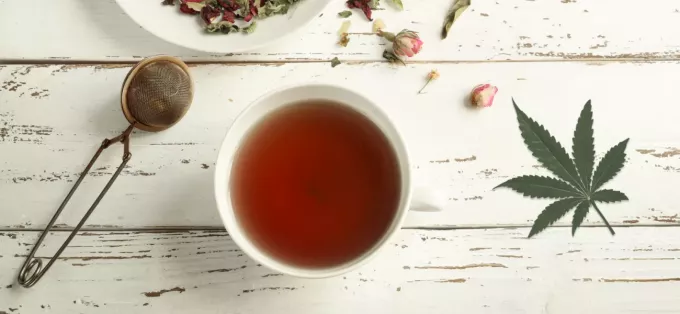
Other Effects of Weed Tea
Besides a buzzy good time, weed tea also has a plethora of other benefits!
While we all enjoy the feeling of a fat blunt from time to time, smoking weed isn’t the healthiest way to consume the compound. From a dry, scratchy throat to lung irritation, breathing weed in can bring upon users many ailments. Weed tea, on the other hand, removes all the unnecessarily harmful steps in ingesting weed. No more coughing fits or dry mouth for you—and drinking tea even hydrates you as it gets you high!
Another amazing benefit of cannabis tea is that it helps with pain management. As ancient civilizations quickly discovered and scientists have proven today, marijuana has incredibly potent pain-relieving properties. With its anti-inflammatory characteristics, weed tea doesn’t only help manage chronic pain; it can prevent it, too! The cannabinoids, terpenes, and other compounds in weed tea can keep these conditions from forming or worsening.
If you’ve ever struggled with symptoms like cramping, constipation, or indigestion, put the laxatives down and brew this ancient remedy. A recent study found that the terpenes in cannabis may have promising gut benefits, including reducing the formation of ulcers, protecting digestive cells, and a strengthening mucus protection barrier.
Additionally, cannabis has been proven to help users manage mental health ailments like anxiety and depression, meaning that weed tea won’t just make you high. It’ll hydrate, help, and cal you down all with one delicious sip!
The Best Weed Tea Recipe
Now that you’ve read all the history and hype surrounding cannabis tea, you’re probably itching to learn how to make the famous and fabled beverage. Below, you’ll find a list of ingredients and directions to brew the weed tea of your dreams!
What Do I Need?
-
1 gram of cannabis
-
1-2 cups of water
-
1 tea bag
-
Sweetener of choice (honey, milk, lemon, etc.)
-
Grinder
-
Oven
-
Stove and pot (or a teapot)
-
Tray
How Do I Do It?
Step 1: Time to Decarb!
Decarboxylation is, as mentioned many times before, a crucial step in making your cannabis tea psychoactive. If you’re looking for a lowkey, non-intoxicating beverage, feel free to skip this step!
- Grind or break your cannabis. Use the grinder to ground your herb. If you don’t own a grinder, you can roughly break it apart with your fingers into smaller chunks instead.
- Heat your oven to 230°-245°F. Depending on your oven, its age, and how evenly it cooks, this number may vary. This estimate should be a good guide for your own oven, but it all depends on the state of your appliance.
- Pull out the baking tray. Lay down a piece of parchment paper to protect both the tray and the cannabis, and spread your flower evenly across the sheet.
- Bake for 30 minutes. Gently stir it every five minutes to ensure an even decarb process.
- Stay vigilant. Remember, your goal here is to activate these beneficial compounds, not burn them to a crisp! Too much heat could break down the essential cannabinoids and terpenes in cannabis that work to enhance your high.
Step 2: Boil Some Water
This step is pretty straightforward—just boil some water! Be mindful of how much tea you want to make, and remember that some of the water will evaporate before you get a chance to gulp it down!
If you have an empty teabag or a mesh tea ball, feel free to add as much ground cannabis as you’d like. If not, you can just add the flower straight into the water and strain it later. Add a teabag of your favorite tea, as well. Allow your mixture to steep for 5 to 10 minutes.
Step 3: Remove Your Infuser & Sweeten It Up!
After 10 minutes, either remove your teabags or strain the liquid. Add your sweetener of choice—or spice it up however you’d like—and enjoy!
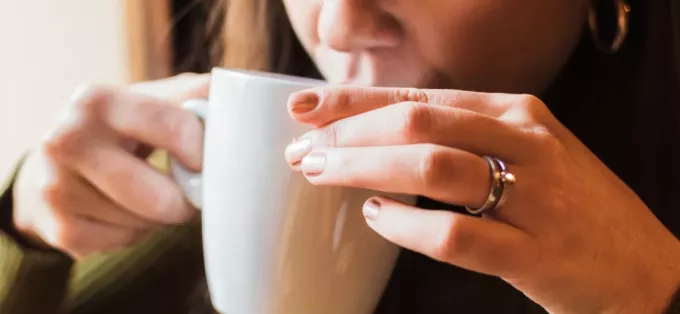
Before you go adding any extra magic to your tea, remember that tea has to pass through your digestive system and get metabolized before kicking in. You may have to wait an hour or two for the full effects of cannabis tea to kick in (and when it does, it will last several hours), so don’t go around chugging weed tea like it’s your grandma’s iced tea!
If the tea isn’t hitting like you want it to even after a couple of hours, which unfortunately sometimes happens, there are many ways to up the dosage when your drink is lacking in the THC department.
Add Kief
If you feel like your tea could be a little stronger, kief may be the key. Kief, which is a term referring to the pure and clean collection of loose cannabis trichomes, is an incredibly easy way to up your dosage. Just sprinkle a little bit of kief into your mixture during the steeping process and enjoy this amped up high!
Keep in mind, however, that since it’s impossible to tell how much THC is in your kief, the psychoactive effects of this add-on may be unpredictable.
Mix in A Tincture
An even easier way to add a little extra kick to your weed tea is by adding a tincture. The tinctures you find at dispensaries have already been decarbed, so you don’t have to worry about activating the THC. As a matter of fact, you could even substitute the decarbed weed for a tincture from the get-go!
As we all learned in elementary science class, however, oil and water don’t mix well, so you may want to opt for an alcohol or glycerin-based tincture rather than one made with oil. If you use milk, an oil-based tincture might work, but the most important part of using a tincture is to drop as much (or as little) as your heart desires and enjoy!
Cannabis Tea: Final Thoughts
Cannabis tea isn’t just any old tea. It’s the best and most soothing way to enjoy the properties of the cannabinoids you know and love. Through a simple process of decarboxylation and the normal steps you would take to make regular tea, you can get more out of your flower and your teapot!
With a history as rich as its flavor, weed tea offers all the buzzy benefits of cannabis plus the delicious taste of your favorite tea. And with our foolproof recipe, you won’t want to put your mug down! What else is there to say?

